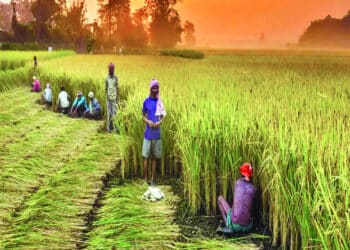A study, first of its kind, was conducted to understand the impact of plastic pollution upon the ‘Freshwater Aquatic, Terrestrial and Avian Migratory Species in the Asia and Pacific region,’ and the results suggest that these species are most vulnerable to plastic pollution.
The study was undertaken by the UN’s Convention on the Conservation of Migratory Species of Wild Animals (CMS) and the report would be incorporated within the UNEP CounterMeasure II Project.
CMS Executive Secretary Amy Fraenkel stated, “The focus has thus far been on clean up in our oceans, but that is already too late in the process. We need to focus on solutions and prevention of plastic pollution upstream.”

The report involved case studies of the Ganges and Mekong river basins, which together contribute an estimated 200,000 tons of plastic pollution to the Indian Ocean and the Pacific Ocean every year.
According to the study, plastic pollution is not only restricted to affecting the ocean animals, but rather it is also affecting the species living in rivers and land protected under CMS, highlighted the Press Release of the organization.
Endangered Species listed on the IUCN red list, such as Ganges River Dolphins and Mekong river’s Irrawaddy Dolphins, are especially vulnerable.

“Since most plastic pollution is generated on land, it is unfortunately not surprising that it is impacting migratory and other animal species that live on land and in freshwater environments,” said Ms. Fraenkel.
The report further asserted that the marine mammal Dugong is increasingly drowning by getting entangled in nets and has been notified to be under serious threat, including in river deltas. Dugong deaths have also been associated with plastic consumption in India and Thailand, foregrounded by Wion.
Though most plastic disposal happens on land, the majority of studies are limited to its impact on the marine ecosystem. The terrestrial ecosystem does not have much plastic pollution data.
Ms. Fraenkel stated, “Clearly, we have huge gaps in the scientific literature of the threats of plastic pollution on many CMS species. We need more research to better identify risks to these species, and take appropriate steps to address them.”

The UN experts said in a statement, “Migratory species will encounter a wider range of different environments including ones that are industrialized and highly polluted, leading to the possibility of higher exposure to plastics and associated contaminants.”
According to UN experts, migratory birds are the most observed species which are seen to be associated with plastic and need immediate attention.
They gave the example of the migratory birds, the Black-faced Spoonbill, and the Osprey which has been seen making nests out of plastics, using fishing lines, and shipping debris, often resulting in the entanglement of their chicks.
Also Read : Delhi will implement its 10-year Climate Action Plan by the end of this year
















